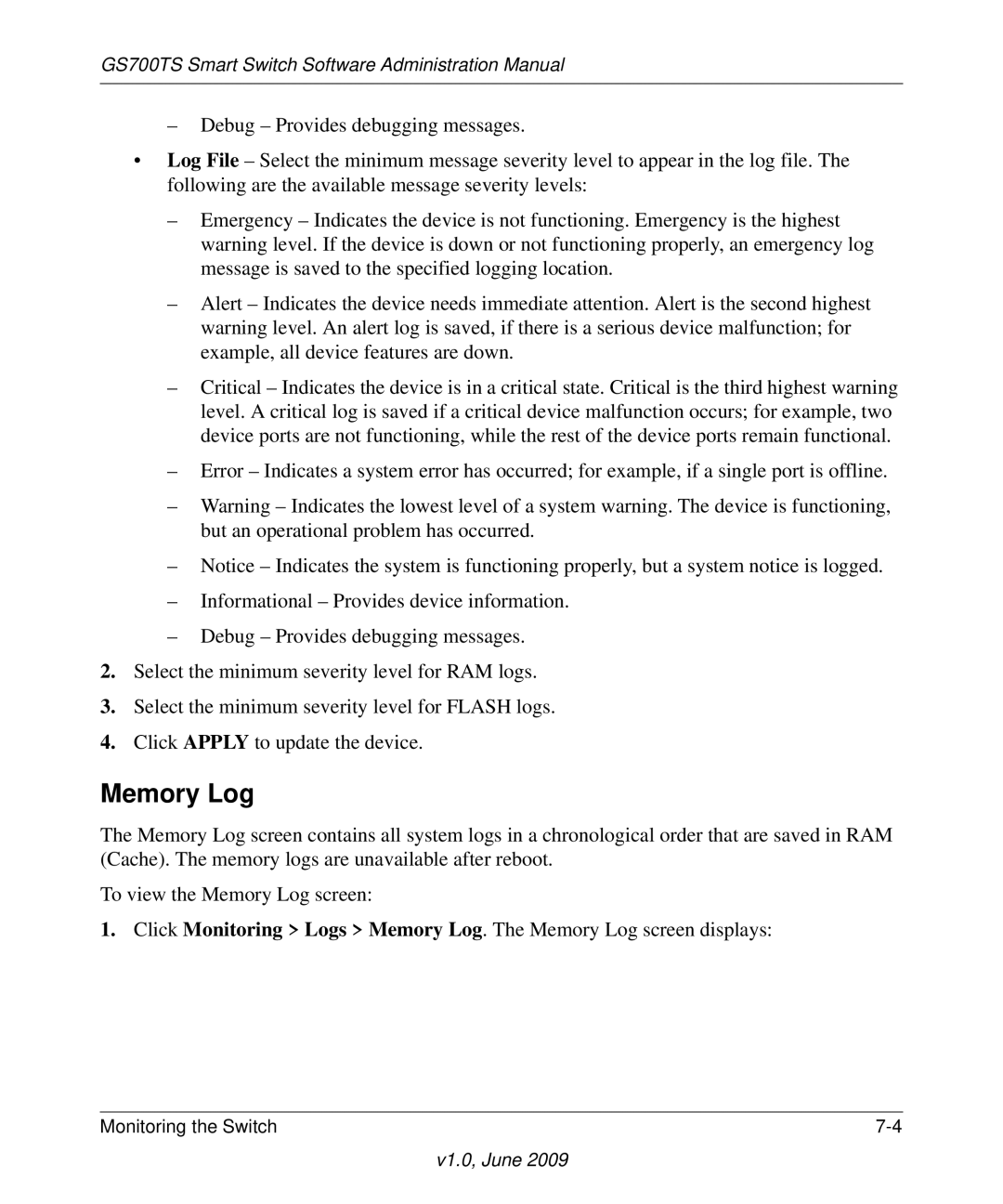GS700TS Smart Switch Software Administration Manual
–Debug – Provides debugging messages.
•Log File – Select the minimum message severity level to appear in the log file. The following are the available message severity levels:
–Emergency – Indicates the device is not functioning. Emergency is the highest warning level. If the device is down or not functioning properly, an emergency log message is saved to the specified logging location.
–Alert – Indicates the device needs immediate attention. Alert is the second highest warning level. An alert log is saved, if there is a serious device malfunction; for example, all device features are down.
–Critical – Indicates the device is in a critical state. Critical is the third highest warning level. A critical log is saved if a critical device malfunction occurs; for example, two device ports are not functioning, while the rest of the device ports remain functional.
–Error – Indicates a system error has occurred; for example, if a single port is offline.
–Warning – Indicates the lowest level of a system warning. The device is functioning, but an operational problem has occurred.
–Notice – Indicates the system is functioning properly, but a system notice is logged.
–Informational – Provides device information.
–Debug – Provides debugging messages.
2.Select the minimum severity level for RAM logs.
3.Select the minimum severity level for FLASH logs.
4.Click APPLY to update the device.
Memory Log
The Memory Log screen contains all system logs in a chronological order that are saved in RAM (Cache). The memory logs are unavailable after reboot.
To view the Memory Log screen:
1.Click Monitoring > Logs > Memory Log. The Memory Log screen displays:
Monitoring the Switch |
